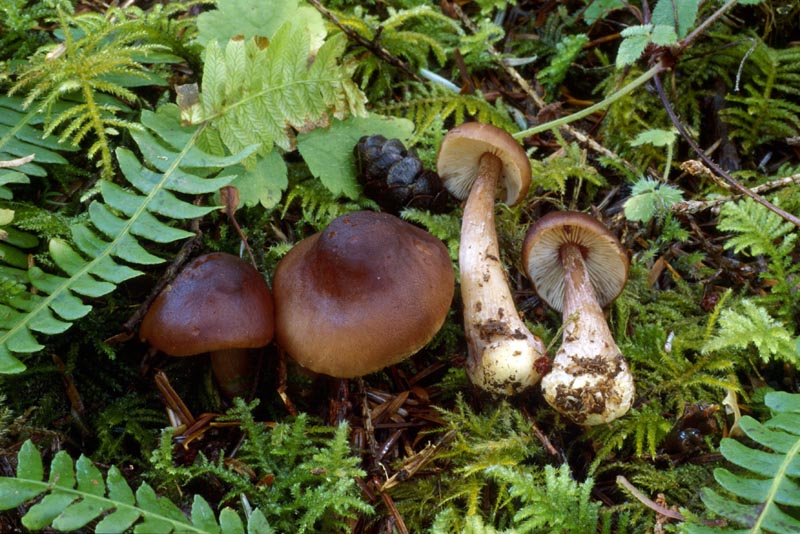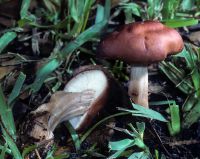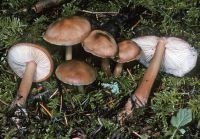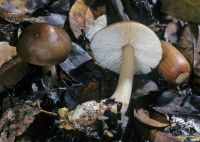Habitat: Conifer forests
Spores: pale pinkish buff, relatively large (mostly 7-9 x 3.5-4 µm) and tear-shaped, almond-shaped, or ellipsoid
Conservation Status: Not of concern
In the PNW, we have several species in the Rhodocollybia butyracea complex, named for their buttery looking caps---R. unakensis (Murrill) Halling, (= Collybia extuberans (Fries) Quélet sensu Lennox), R. badiialba (Murrill) Halling, and R. butyracea form butyracea primarily in conifer forests, plus R. b. form asema (Fries: Fries) Antonín, Halling & Noordeloos in hardwood forests. The various taxa are difficult to distinguish without a microscope and can be confused with Gymnopus dryophilus. When fresh and young, the cap of R. b. form butyracea is red-brown to violet-brown, and then fades to lighter browns. The gills are crowded, thin, white, develop a slight pinkish tint, and the edges are even and then serrulate in age. The stipe is clavate, tinted with colors of the cap, and has a tough rind and soft white spongy interior. The gill edges have a variety of different-shaped cheilocystidia, and the spores are pale pinkish buff, relatively large (mostly 7-9 x 3.5-4 µm) and tear-shaped, almond-shaped, or ellipsoid. R. badiialba is similar in color to R. b. form butyracea and can be separated from other species in this group by its spherical spores. R. b. form asema has a gray-brown to grayish cap when fresh. R unakensis can be similar in color to R. b. form butyracea, but has a somewhat rooting stipe base, is associated with rotting wood, and has smaller (5.5-7 x 3-4.5 µm) spores.
PNW Herbaria: Specimen records of Rhodocollybia butyracea in the Consortium of Pacific Northwest Herbaria database.
CalPhotos: Rhodocollybia butyracea photos.






